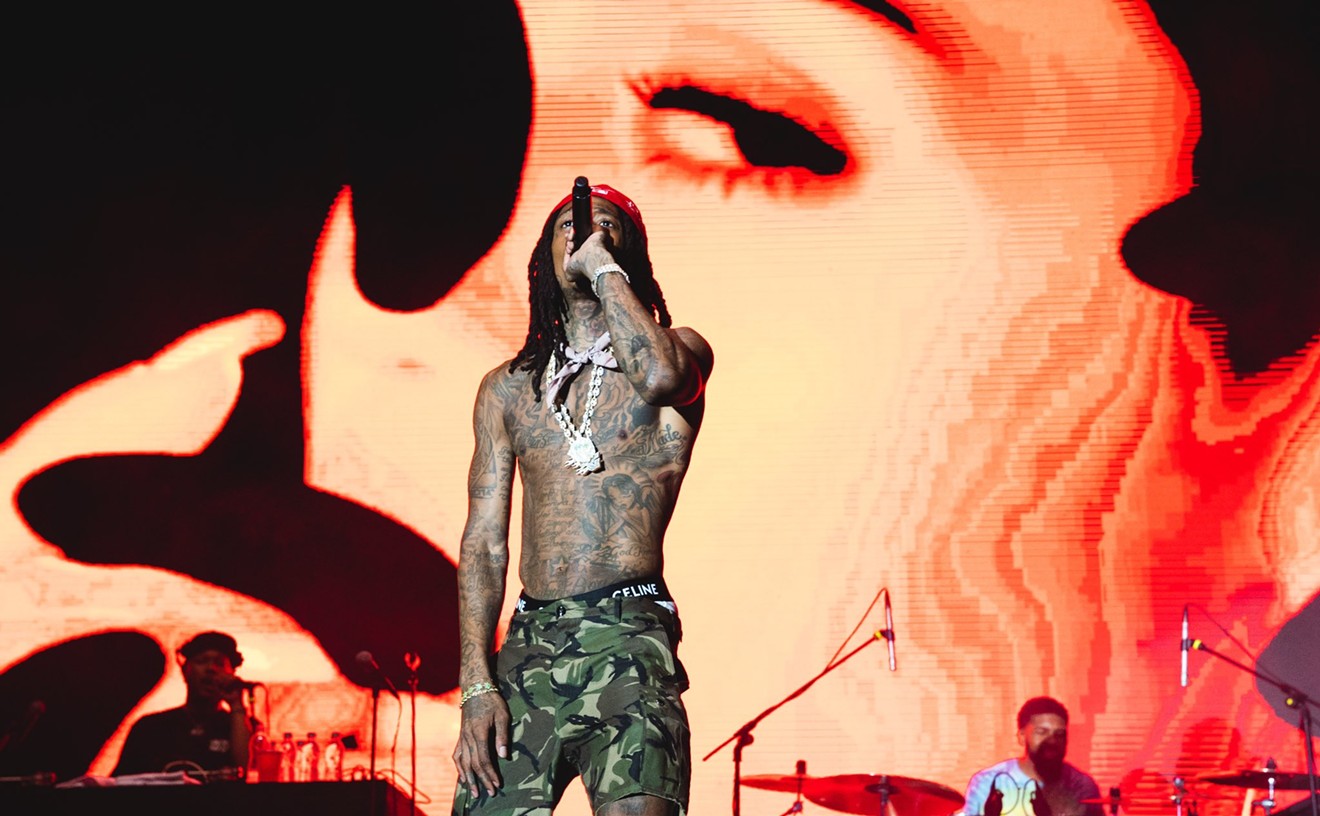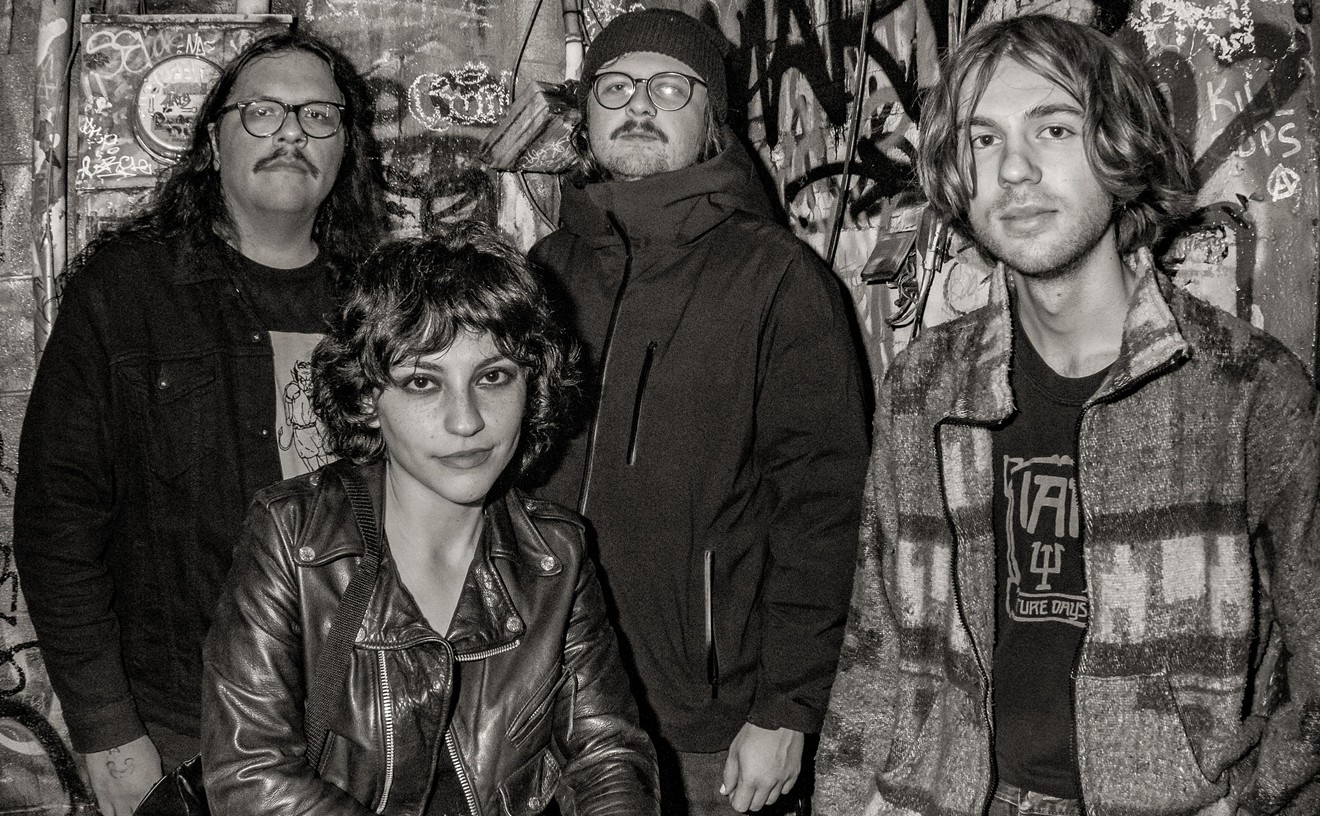The members of Chimney Choir want to show their audience just how messy the creative process can be. "People just see the final product when an album is released. That's not really how it is for us," insists David Rynhart, a founding member of the band, who serves as guitarist, pianist, percussionist and singer. "It doesn't come shiny and finished and wrapped up and packaged. We're going through life and digging for it."
With its latest release, an episodic work titled (compass), the quartet is hoping to convey that spirit of exploration, experimentation and dogged determination; to that end, it's releasing the album's songs bit by bit, in a series of four themed shows, each named for a cardinal direction.
The first two performances, titled "Look West" and "Look South," took place earlier this year at the Leon Gallery space on East 17th Avenue. At both of those shows, Chimney Choir released batches of new tunes via digital downloads. The third installment, "Look North," is slated for this week at the gallery, and at the final show, "East," in June, a physical CD of all of the songs will be released. That final show will take place at the Eron Johnson Antiques warehouse at Alameda and Lipan.
"We wanted to have the shows in unusual venues," Rynhart explains. The format of the shows, which are equally inspired by the work of Joseph Campbell and comparative psychology, mixes the heady feel of a carnival with the bold risks of a performance-art showcase.
Each of the gigs includes rounds of storytelling, dancing and performances by guest artists. There are face-painting artists, puppets to complement songs, and stories and sound collages in between the music. The band also pushes sensory boundaries with food tastings and experiments with bottled smells. The upcoming program is set to include performances by dance collectives Language of Fish and Clouds and Mountains, and the final performance will feature input from local musicians Laura Goldhamer and Ian Cooke.
"We're trying to create an experience for the audience that reflects the experience of the creation of the music for us," says Rynhart. "We're establishing dreamlike environments where the audience can't really tell the show from reality after a certain point."
It's an ambitious artistic mission for a band that started out as your run-of-the-mill bluegrass-and-folk outfit. Rynhart and fellow founder Kevin Larkin started jamming together during Irish-folk sessions in Boulder more than a decade ago. They worked on different projects in Denver and beyond before joining forces with multi-instrumentalist Kris Drickey and forming the band three years ago.
In that short time, the group has moved past its folkie roots. Although the band's first two albums, 2011's (turtle) and 2012's (ladder), include plenty of acoustic guitar, understated vocals and other sound cues from the genre, the band has also worked to include experimentation with synthesizers and electronic percussion.
"We called ourselves Americana/folk for a long time," Drickey recalls. "Just with this new album and the depth that we've reached as songwriters and as a band, we've stepped into this new collaborative sound. It's more unique to who we are as a band."
More and more, the group's identity has become tightly tied to its willingness to experiment, to push boundaries in Chimney Choir's sound and stage presence. "We have a shared interest in performance art and theater and breaking down the fourth wall," Drickey says. "We want to make shows three-dimensional. This album seemed like the perfect opportunity to play with space."
That much is clear from the initial songs from (compass). "I-25" includes atonal rounds of percussion paired with carefully constructed harmonies, while "Ceasefire" combines Rynhart's soft tenor and rich piano lines with abstract percussion experiments, and "Poor Boy" starts out simply with a chord progression spelled out on a single acoustic guitar before expanding into synth lines and a rich vocal tapestry that recalls the best work of Fleet Foxes.
"I think it's just a natural development," Larkin asserts, pointing to the band's increased focus on polyrhythms and sound contours. "When we started the band, it was just the three of us; it was strings and a suitcase to bang on. I feel like this is the next natural step. We're going for more intricate combinations."
Part of that growth has come with the arrival of percussionist Carl Sorensen. Sorensen, who joined Chimney Choir more than a year ago, plays with a number of disparate bands and teaches rhythm and percussion classes in Boulder. He's brought his rhythmic sensibilities to the group, exploring the possibilities of "trash percussion," as he puts it, or rhythms banged out through unlikely mediums.
"In electronic music, you hear all of these interesting sounds being used," Sorenson observes. "We asked ourselves, 'Wait, wouldn't it be cool if it was me hitting on a wine bottle, banging on a trash-can lid or spinning around some chimes or a bicycle wheel? There are a lot of sounds to explore with the different drums and different chimes. It's fun on the recordings, but it's fun in the live environment, as well."
So far, the (compass) shows have offered a far-from-average concert experience. Instead, they've been carefully coordinated exercises in musical theater that have served as a shared celebration among friends and fellow artists. It's been a difficult atmosphere to re-create as the band has spent a good chunk of the past month touring cities in Mississippi, Texas and Oklahoma.
"What's cool about the episodic release is that there's more of a story introduced, and the music is just a part of the story," Sorensen muses. "Whereas being on tour, it's more of a normal format that we're all very used to. The music is still the same."
The music may be the same, but the (compass) shows offer audiences an in-the-moment lure straight out of the world of theater. Larkin likens the effect to playing a character, to being a cast member in a larger and longer narrative. That much was clear in one of the more memorable moments from the first two shows, which involved a story about a shaman who had lost his way in the jungle. In the story's most surreal moments, a giant puppet head floated over the small audience gathered in the intimate art-gallery space off 17th Avenue. As it turned out, the puppet was only one of several sensory effects designed to make the narrative more immediate.
"The sound collage was getting a little strange, and the shaman was telling everybody what to do," Larkin explains. "At that moment, some dancers came out and dosed everybody in the audience with an aphrodisiac. We played with that. You're in the middle of a story, and then all of a sudden you're in the story."










